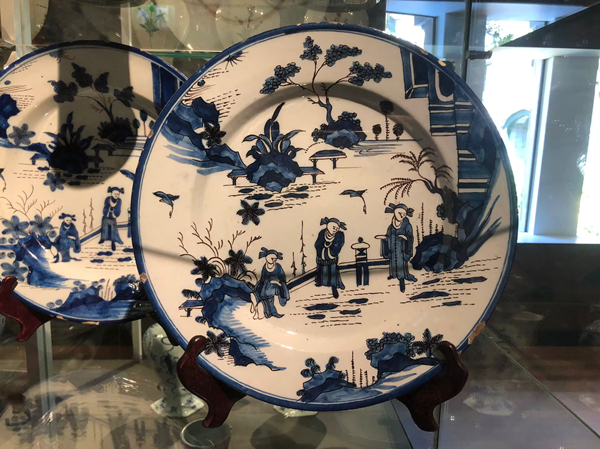


Chinese blue and white porcelain

A porcelain piece produced by Royal Delft, featuring a blue and white colour scheme inspired by the Chinese porcelain exported to Europe in the 17th century Photo: Chu Guofei/CSST
Chinese blue and white porcelain is a distinguished form of ceramics that has captivated collectors and enthusiasts worldwide for centuries. This type of porcelain is characterized by its intricate blue designs set against a pristine white background. The blue pigment, derived from cobalt oxide, produces a striking contrast that enhances the delicate motifs commonly featured on these pieces.
The origins of blue and white porcelain can be traced back to the Tang Dynasty (618–907), but it was during the Yuan Dynasty (1271–1368) that this art form flourished. The Mongol expansion facilitated the import of cobalt from Persia, which was crucial for the development of blue and white porcelain. Jingdezhen, a city in Jiangxi Province, emerged as the epicenter of porcelain production, earning it the nickname “Porcelain Capital.”
During the Ming Dynasty (1368–1644), blue and white porcelain reached its zenith in terms of technical refinement and artistic achievement. The reign of Emperor Xuande (1426–1435) was particularly noted for the exceptional quality of blue and white wares. Artisans during this period mastered the application of cobalt blue underglaze, achieving remarkable precision and depth in their designs. Common motifs included floral patterns, landscapes, mythical creatures, and scenes from literature and folklore, reflecting the cultural and artistic milieu of the time.
The Qing Dynasty (1644–1911) saw further advancements in this art form. The Kangxi, Yongzheng, and Qianlong emperors were great patrons of the arts, and their support led to innovations in glaze techniques. The porcelain from this period is celebrated for its exquisite craftsmanship and diversity of styles.
Blue and white porcelain has played a significant role in diplomatic and trade exchanges, becoming a symbol of China’s cultural and artistic prowess. Today, blue and white porcelain continues to be a beloved art form, admired for its timeless beauty and historical significance.
Copyright©2023 CSSN All Rights Reserved